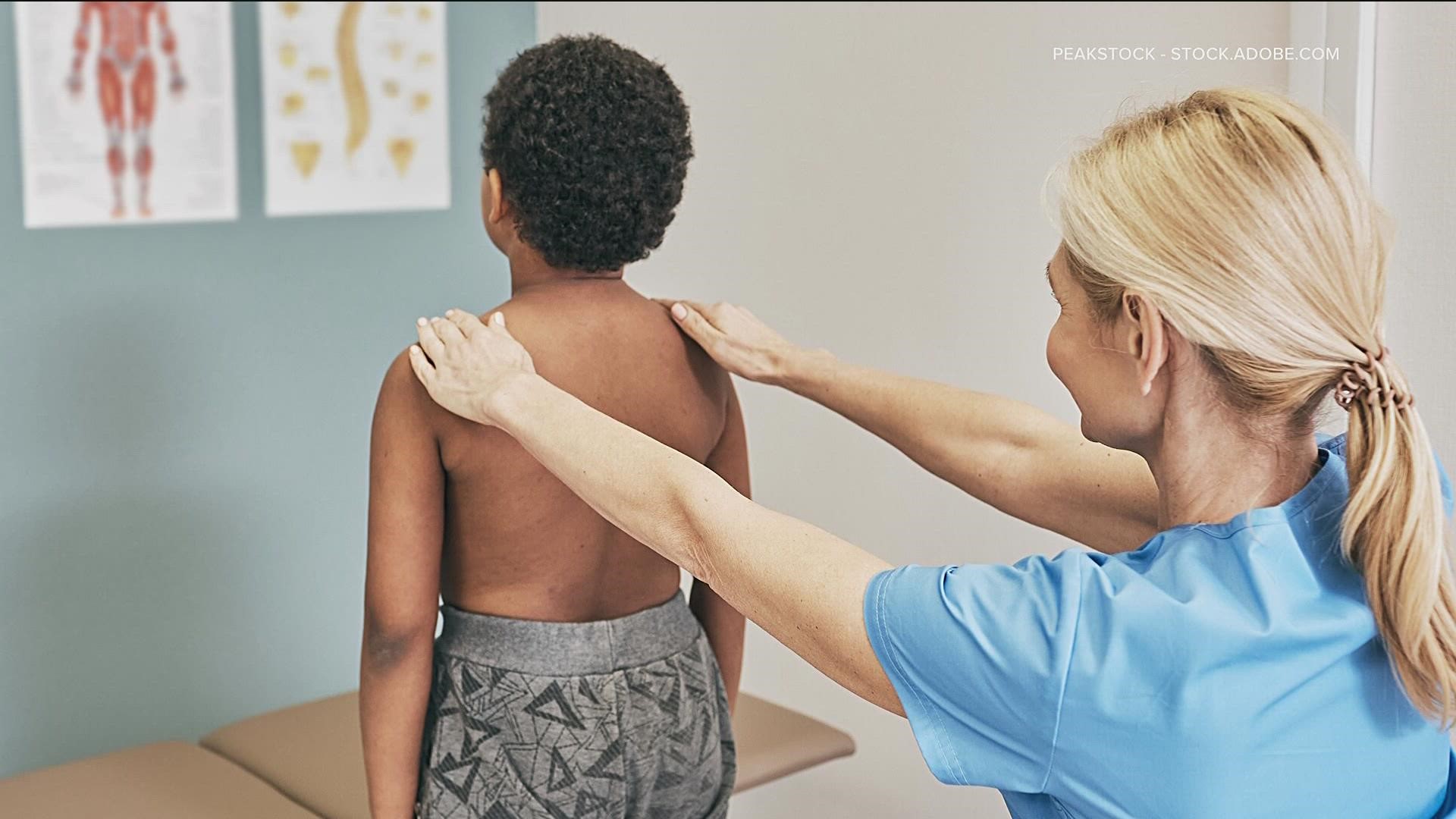ATLANTA — Doctors are calling on parents to keep an eye on their child's spine during the pandemic after noticing an increase in kids coming in with signs of scoliosis.
The condition, characterized by a curvature in the spine, typically evolves during a child's developmental stages as growth spurts occur, and experts worry that cases that are normally caught early are being missed.
According to Children's Healthcare of Atlanta, around 2% to 3% of kids have scoliosis with around three million cases diagnosed annually. Most of these cases are normally caught early through pediatricians' appointments and school screenings, but the pandemic has disrupted many usual checkups.
Dr. Nick Fletcher with Children's Healthcare of Atlanta tells 11Alive's Liza Lucas that Children's is seeing the impact of these missed screening opportunities.
"We're seeing a fair number of kids come in with larger curves," Fletcher, Vice Chief of Orthopedics at Children’s Healthcare of Atlanta at Egleston, said. "There typically is a common response from parents that is sort of shocked, and they're wondering, how did I possibly miss this?"
While there is a range of treatment for scoliosis, ranging from physical therapy and braces to surgery, missing the condition in the earlier stages can have a detrimental impact on the organ system
"In really little kids, if we miss this, they can actually have pulmonary issues and decreased pulmonary function," Fletcher explained. "As the kids get older, we tend to notice things, that in their formative years, may be simply just mere cosmetic deformity. Some issues with pain and discomfort, but then certainly again, as they get older and older, this will lead into other organ system problems like pulmonary issues."
While Fletcher urges families to make routine doctor's appointments, he also said there are checks parents and caregivers can do at home that can make a difference.
"I think the biggest thing that you can do as a parent is just to actually look at your kids back," he said, adding he checks his own kids' backs every four to six months.
The critical period for scoliosis detection, Fletcher said, is 5th to 8th grade, a time when many kids are experiencing significant growth spurts.
Six common signs of scoliosis include:
- Uneven shoulders and shoulder blades
- Unequal distance between the arms and body when standing
- Uneven hips
- Ribs that are prominent or stick out in one area
- Muscles that are prominent in the lower back or that bulge on one side
- Uneven skin folds at the waist
Doctors emphasize early intervention is key. For more information or instructions on the Adams forward bend test, visit Children's.

